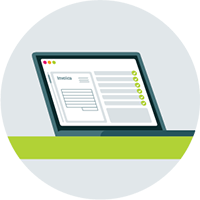Automated Payment Systems: The Complete Guide

An organization is only as strong as an efficient accounts payable team. They do the heavy lifting when it comes to receiving and processing invoices, paying suppliers, and managing expenses.
However, many of the processes involved in accounts payable are traditionally tedious, time-consuming, and prone to errors because they’re done manually, tying up your resources and potentially developing bottlenecks throughout the process. A payment that should only take a couple of days to process can be dragged out for weeks, but it doesn’t have to be this way.
There are modern automated payment solutions that can reduce these problems by increasing efficiency and eliminating the often monotonous, manual processes involved — enter payment automation.
In this guide, we’ll cover:
- What automated payments are and the types of payments that can be automated.
- The top benefits of leveraging an automated payments system.
- Things to consider when choosing an automated payments system for your business.
What are automated payments?
In a general sense of the concept, automated payments are automatic transfers made from a bank account to pay bills. When you automate your payments, you’re agreeing to have your bank transfer a certain amount of money on a certain date to pay an invoice.
When talking about automating payment execution, it refers to technology that increases efficiency by eliminating the monotonous, manual processes involved with making payments. Often, automated payment offerings are part of a holistic accounts payable automation solution that integrates with your ERP to streamline the whole AP process, from capturing invoices, to coding to payment processing. These solutions can reduce the risk of fraud, improve cash flow, streamline reconciliation, and help to scale your business more easily because of the visibility and centralized control they provide.
What is an automated payment system?
An automated payment system facilitates the transfer of funds between two parties, without the need for manual intervention or data entry. Since this process is entirely automated, it streamlines the end-to-end AP payment process, reducing the reliance on traditional paper-based methods, as well as saves valuable time, money, and resources for businesses.
How does a automatic payment system work?
When it comes to automatic payments with MineralTree, we make it easy by providing an end-to-end AP automation solution in four easy steps, which are outlined below.
1. Capture
First, you scan or have suppliers send invoices to a unique email inbox. There’s no need for manual entry, which is tedious and prone to errors. The header and line-level invoice details are extracted using advanced OCR technology with human verification for 99.5% accuracy. API-level ERP integration is also provided in order to sync invoice and payment data to your accounting package — all with unlimited document storage.
2. Approve
We provide a way for you to instantly route invoices for online review and approval from anywhere, using your current workflows and best practices. You can use in-application tracking to monitor the workflow and approve with one simple click. The elimination of paper processes gives you a centralized control for review and scheduling. We also provide automated reminders to ensure approvals are received in a timely manner.
3. Authorize
Whether you’re in the office or on the go, you can quickly and securely authorize payments. With segregation of duties and two-factor authentication, we reduce any risks, and even support single or multiple authorizers with enhanced security.
4. Pay
The entire AP automation process ends with automatic payment execution. No more printing, signing, and mailing checks, or worrying about payments fraud when you make all of your payments from one place. With MineralTree, customers can execute payments using various payment methods including: checks, ACH, virtual card, and FX. Whether you’re paying via ACH or check or modernizing with virtual cards for improved cash flow, security, and maximum rebates, MineralTree ensures you can use the same simple, electronic workflow to get bills paid. Plus, electronic remittance details are sent to your suppliers once the process is finalized.
Types of payments that can be automated
Any payment that is funneled through the accounts payable department can be automated. This includes virtual cards, checks, ACH transfers, credit card, Purchasing Card (P-Card), or wire transfer. The type of automated payment depends on the vendor’s preferred payment method.
The top benefits of automated payment systems
Of course, there are always two sides to every situation, and that includes payment automation.
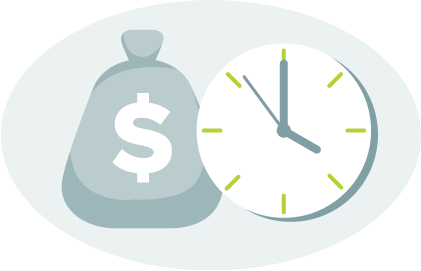
Save time and money
A main benefit of payment automation can be found in cost reduction. Businesses spend $510 billion each year on manual AP processes — a significant portion of which is generated by paper checks, which can cost between $5 and $12 to process. Not only does payment automation speed up the process and increase efficiency, but it does so in a more cost-effective manner. In fact, with limited automation (only having 1-2 steps of the AP process automated), the cost per invoice drops down to $2.81 and $1.64, respectively.
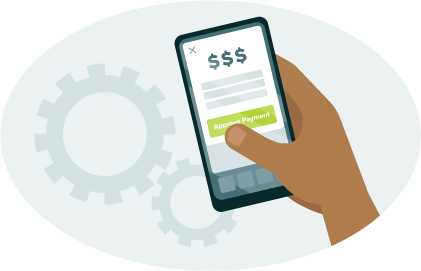
Business continuity
Payment automation solutions help to support your organization’s business continuity plan by enabling your team to execute their payments process anytime, and anywhere. The ability to facilitate this process remotely has proven to be especially helpful in recent times as many organizations have gone completely remote.
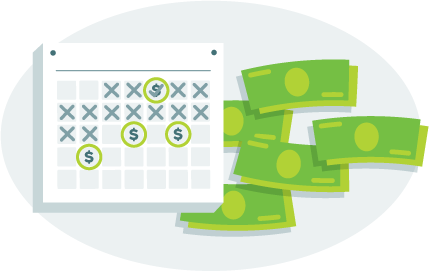
Control outgoing cash flow
With payment automation, organizations can determine precisely when and how they pay their vendors to ensure maximum control over outgoing cash flow. This allows businesses to capitalize on early-pay discounts and virtual card rebates, while also avoiding late fees and duplicate payments.
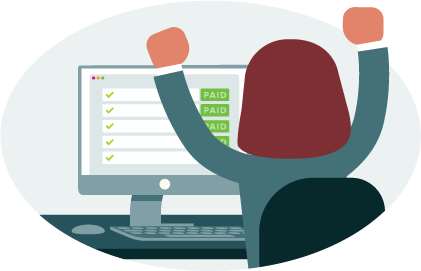
Payment visibility and automatic reconciliation
With complete visibility into the payments process, accounting managers are able to maintain a 360-degree view into the status of all payments at any given time. Automatic reconciliation capabilities allow for a fully automated daily bank reconciliation of your cash accounts, eliminating the need for manual intervention.

Reduce fraud risk
According to the AFP, a record 78% of businesses were somehow affected by payments fraud last year, and hired and trusted employees have been involved in more than three out of every 10 instances of payments fraud. With automated payments, all invoices travel through one online process. Because of this, accounting managers have complete visibility into every payment, at every step of the process, allowing them to more effectively mitigate fraud risks as they arise. Further, integrated payables solutions can help to reduce the risk of fraud by maximizing e-payment methods and leveraging security features like encryption, two-factor authentication, audit trails, and fine-grained access controls.
Challenges of an automated payment system
Of course, there are always two sides to every situation, and that includes payment automation. Here are some of the challenges associated with switching to an automated payment system.
Transitioning to a new system
There are always some growing pains as you make the transition to a new payment system. While cloud-based automation is generally quick and efficient, you also have to take into account the fact that employees will need to be brought up to speed. However, the time saved in the long run will make the initial time investment worth it.
MineralTree offers rapid implementation and time to value through its proven methodology. We’ll guide you through every step of the process, from implementation and configuration, to user training and test file submission. We’ll even be with you as you schedule your first live payment run.
Perception of loss of control
One of the common myths about automated payments is the fear that you will lose control in the process. However, in reality, you get to decide when suppliers get paid, and actually have more control and increased visibility into the payment process. With MineralTree, you can search for and retrieve invoice and payment information at any time, from anywhere.
Issues with integration
You may encounter problems integrating with your ERP, as your provider of choice may not have integrated their payments automation solution with a particular accounting package before. Be sure to ask the AP software provider the necessary questions about supported ERPs, as well as possible roadblocks and solutions. MineralTree supports hundreds of ERPs and accounting systems to help you effectively integrate with your system of choice.

Why use a payment automation solution?
The manual payment process is not only tedious, costly, and inefficient, but it also brings with it certain layers of risk that can be mitigated with an automated solution. Businesses that invest in MineralTree automated payments can see a 60% increase in efficiency for both AP and payments processing. In addition, by building simple, repeatable, and scalable payment controls into their supplier payment process, they’re greatly reducing their risk of fraudulent activity.
By investing in a automated payment solution, you’re also freeing up your staff for more strategic thought and initiatives, centralizing all of the accounts payable operations, making room for more timely payments and effortless follow-up with customers, and simplifying transitions between each step of accounts payable.
7 Things to consider when choosing an automated payment solution for your business
Choosing an automated payment solution is an important decision that can have a major impact on your businesses ability to scale back-office and financial operations over time. Therefore, here are some important things to consider when choosing the right AP solution for your business.
1. True bi-directional syncing
Bi-directional syncing, also called two-way syncing, means that data is synced with your ERP or accounting system in real time. This process eliminates manual data entry, reduces errors, and prevents issues like duplicate payments. It also enhances accuracy, saves time, and maintains data consistency.
2. Accurate invoice capture
The automated payment solution you choose should guarantee accurate invoice capture. While OCR technology is commonly used, it’s only about 60% accurate alone. With a solution like MineralTree, OCR technology is used in combination with human review to achieve up to 99.5% accuracy in invoice capture. This two-layer approach catches errors and ensures speedy and precise invoice processing.
3. Easy invoice approval process
The invoice approval process should be as seamless as possible, with features that allow automatic routing based on predefined rules, as well as allow reviewers to conveniently assess and approve invoices, preferably within their email inbox. Ensuring a smooth approval process is vital for vendor relationships; MineralTree’s State of AP Report indicates 52.3% of vendors believe AP teams don’t respond promptly to payment inquiries. An automated approval process facilitates quicker payments and strengthens vendor relationships.
4. Easy to scale
It’s important to choose an automated payment solution that can scale with your business. With a cloud-based solution, your business can easily scale to meet the changing needs of your business, without overpaying for capacity you don’t need. In addition, you’ll want to find a solution that doesn’t charge extra for adding more users or seats to the platform. This ensures that your AP teams can collaborate effectively as your organization grows, without incurring additional costs.
5. Comprehensive AP analytics
Timely reporting and analytics are vital for improving accounts payable processes and financial operations. Unlike most ERP systems that only show data only after invoice processing, MineralTree allows immediate use of data upon invoice capture, making it much easier to track invoices and accrual, as well as gives you a centralized platform that can display insights into your AP performance.
6. Offload vendor virtual card enrollment
Virtual cards are a single-use credit card that is pre-loaded with a specific amount of money, and are a great option for businesses, as it is a secure and convenient way to make payments, as well as take advantage of cash-back rebates. That said, enrolling vendors in virtual card programs can be a time-consuming process. When choosing an automated payments provider, consider a solution that offers services to enroll vendors in virtual card programs, so you can maximize your rebate potential and save valuable time.
7. Manages multiple currencies
Successfully managing cross-border payments can be very challenging for AP departments since it includes handling different currencies, maintaining positive supplier relationships, an increased risk of fraud, and unexpected costs. If your business conducts international transactions, look for an AP solution that is capable of easily managing multi-currency payments, that simplify currency conversion, synchronize tax codes from your ERP, and enable payments to vendors in their local currencies. This ensures compliance and helps avoid intermediary bank fees.
Automated payment system FAQs
What is an example of automated bill payments?
An example of an automated bill payment is when a supplier sends an invoice electronically to your business’s AP department. From there, data is extracted using OCR technology, combined with human review to ensure 99.5% accuracy. Once data has been scanned, the system automatically matches the invoice against the corresponding purchase order (PO), and the invoice is automatically approved for payment. Finally, using pre-set payment controls and authorization, the payment is made on or before the scheduled due date and the entire process is documented and stored electronically.
Are automated payments safe?
Yes, automated payments are safe. However, it’s important to set robust security measures when setting up automated payments including encryption, authentication methods, compliance, as well as fraud detection and prevention capabilities.
How do you automate bill payments?
Your business can automate bill payments by switching to an AP automation solution, like MineralTree. MineralTree offers rapid implementation and time to value through its proven methodology. From implementation and configuration, to user training and test file submission, MineralTree will help your business automate bill payments through every step of the process.

